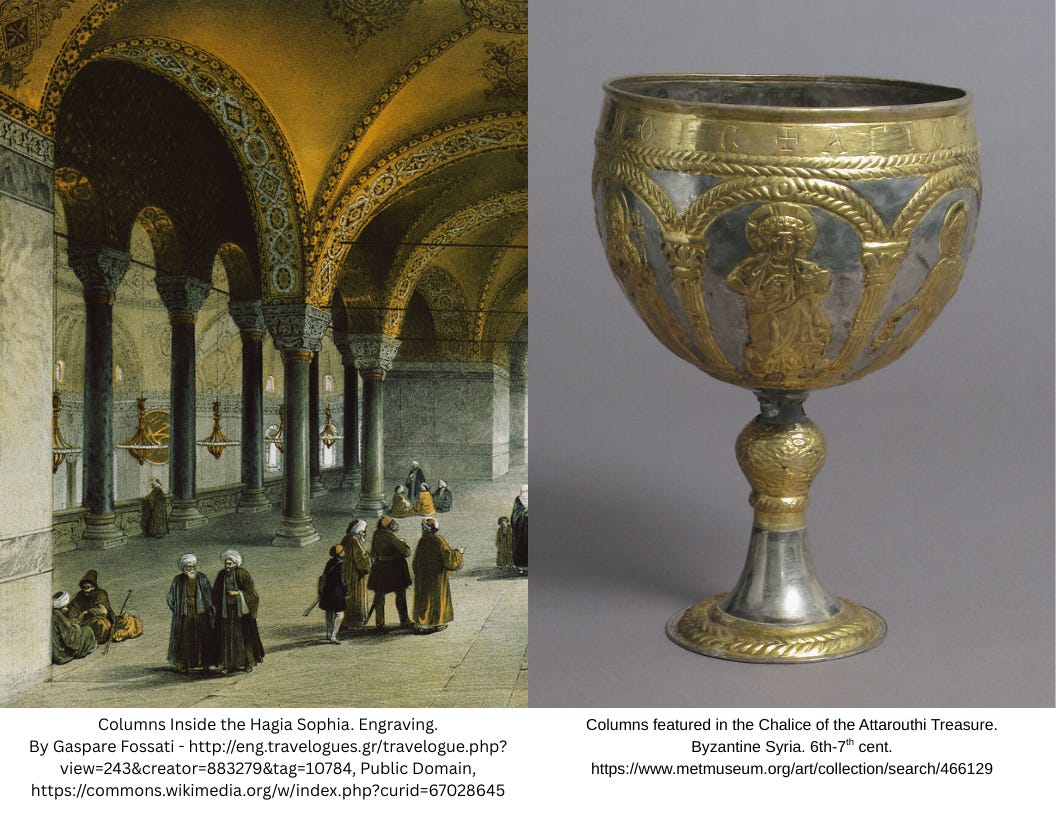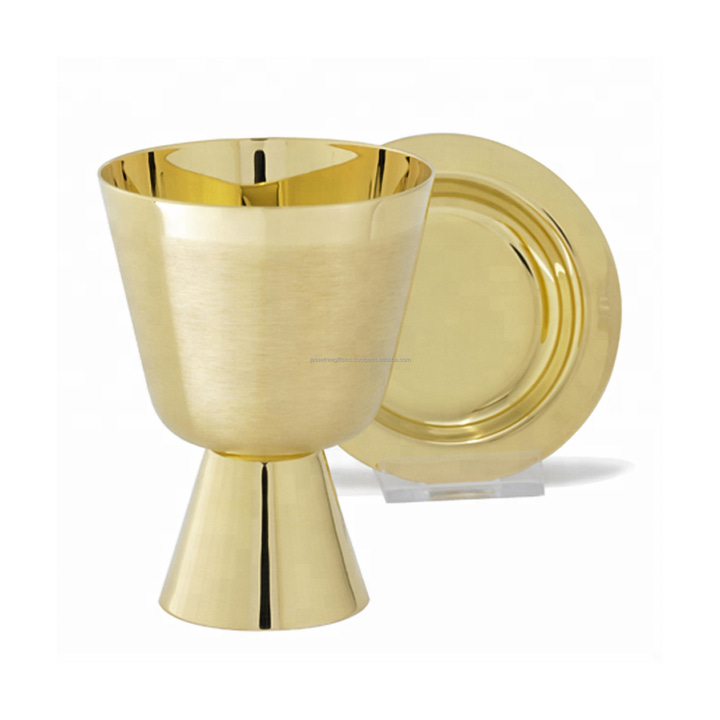Architecture and Chalices
Intro to tracing the development of sacred vessels over two-thousand years
The development of the chalice is part of art history in general and goes along with the development of painting, mosaic, architecture and the other fine arts. Just as there are Gothic cathedrals, there are Gothic chalices. Along with Romanesque icons and manuscripts, there are Romanesque chalices.
The people of every age seem to have desired for their chalices to match their architecture.
Like the buildings of sacred worship, around which the life of the community has always revolved, the chalice represents the container that mediates between heaven and earth. Indeed, in a special way, the chalice is the unique place of encounter that both pours Heaven down to the people and offers the Earth up to God. In this way, the close symbolic relationship between the temple or church building and the chalice in traditional Christianity is manifested.
During the Romanesque period, chalices often feature Roman arches and columns typical in the architecture of that period. Likewise, starting in the 17th century, chalices came to incorporate the bulbous curves that were ubiquitous in the baroque architecture of the time. The exuberance and excess of the baroque sensibilities carried through to the form of the chalices. In the early Byzantine period, the chalices likewise included the wide spacious arches, elegant columns, and hieratic icons found in temples such as the Hagia Sophia.
In our own modern / postmodern time of opposites, chalices have appeared that are scarcely more than geometric silhouettes, without embellishment at all; or on the other hand they are decorated with the roughness that emphasizes the raw material of the object. In either case, these modern chalices still tend to follow the minimalist architecture and mentality of the buildings they accompany.
Even in their material, rather than being made of solid silver or gold, most chalices produced today are mere cheap brass vessels with a thin coat of gold plating. This also reflects the mass production-philosophy that unfortunately holds sway even among clergy and artists responsible for the sacred liturgy in many places. Too often we settle for cheap symbolically deconstructionist buildings and chalices that won’t last for the ages. With that weak mindset towards architecture and chalices, what can our age produce that can rival the priceless treasures of the past?
These trends make dating a chalice relatively straightforward with a little bit of knowledge of their patterns. This is the first of a series of articles that lays out the overall timeline and trends of chalices of both East and West for the last 2000 years, so that you can more easily identify the style and meaning of the chalices you may see in the sacristy or on the altar.






Miguel, I've been saving this, waiting for time to read. I love the connection between architecture and chalices...a new one for me, and I'm passing this on to a friend who is teaching art for Catholic teens...a major focus is on architecture, so I know she'll appreciate this further connection. She has one unit on the human person as temple of the Spirit, and the chalice is the perfect 'bridge' between the macro-architecture and that microcosm...perfect! Keep up the good work. I miss you!